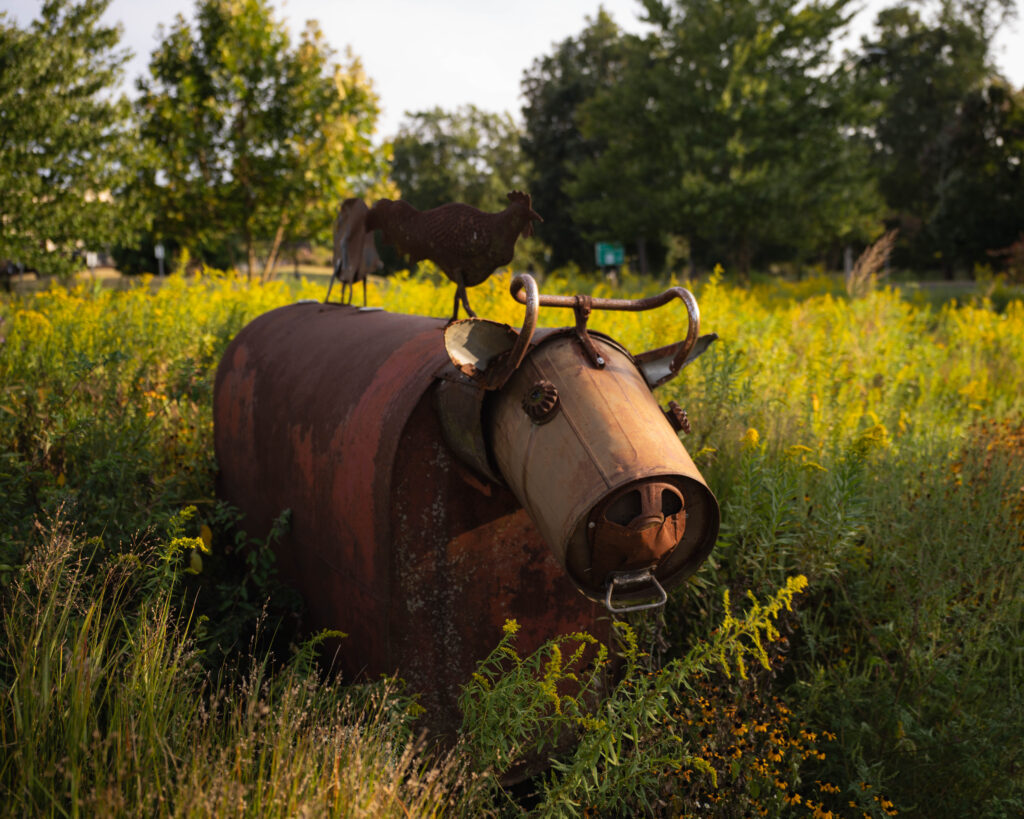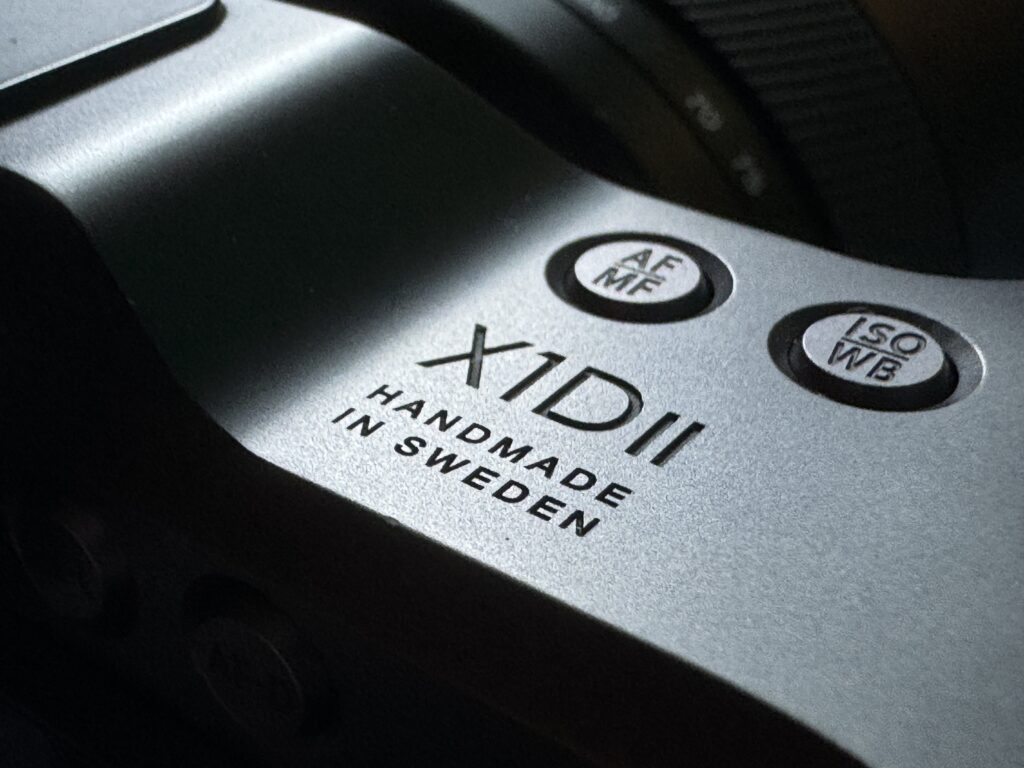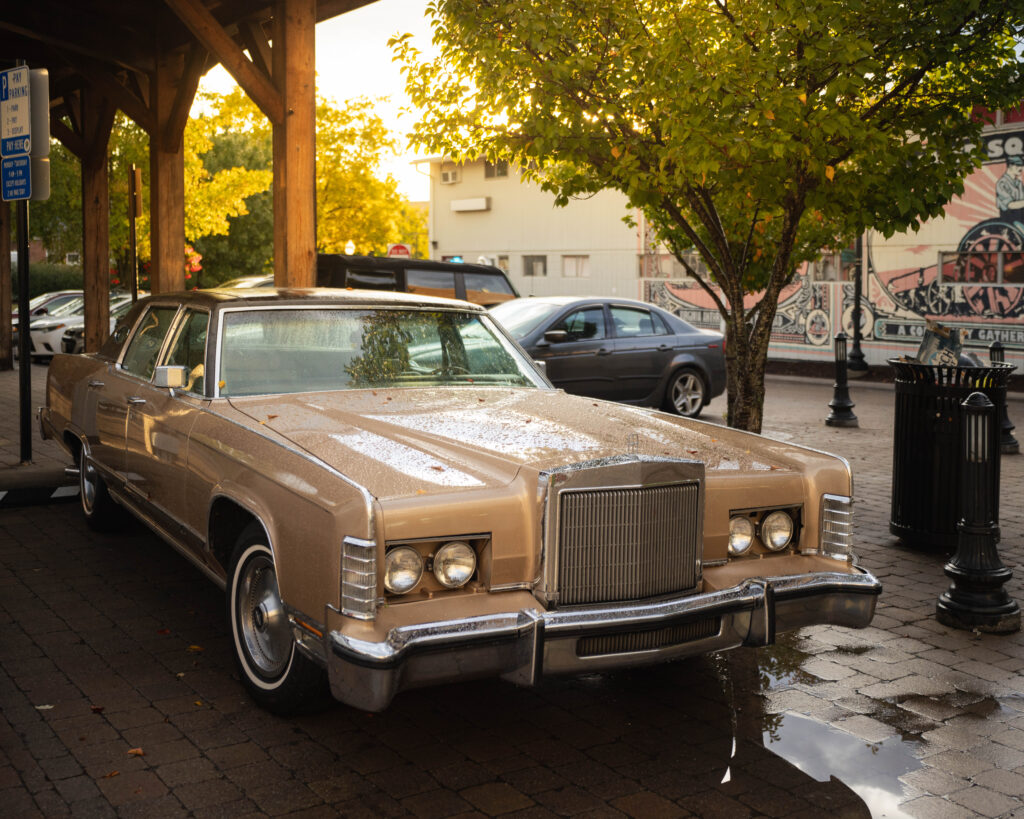After the recommendation from a friend to check out my school’s lending library, I went on a deep dive through all the gear available. After finding a Plustek 8200i as well as a variety of lenses for camera systems too new and expensive for me to own, I found a tab labeled “Specialty Camera Equipment.” Placed firmly on the page was a Hasselblad X1D II 50C. As much as I’d love to pretend I was unphased, I was actually thrilled to be able to borrow the camera. I had only ever heard immensely positive things about digital medium format, and the opportunity to shoot on a Hasselblad felt insanely special. After about a week of waiting for my borrowing period to start, I was finally able to pick it up and start shooting.


To preface, the X1DII is a beautiful camera, full stop. Sharp, defined Scandinavian design combined with the crisp, cool feeling every time you pick up the all-metal body reminds you constantly of the sheer build of the camera. If you still manage to forget the origins of the premium piece of Industrial Design you’re holding, the camera makes sure to remind you with small sans-serif text exclaiming “Handmade In Sweden” on the top plate. This immense attention to detail and cleanliness follows into the colors of the RAW files. The large 50 megapixel files have amazing, natural colors that seem to look good no matter the conditions.

Still, with all this, I found a way to be critical. This isn’t to say that I think it’s a bad camera, (if my overly pretentious praise from the previous paragraph didn’t make it clear enough,) it’s just not a camera for most people, but especially myself. This should have been obvious to me at the time, I’ve always been a run and gun, faster paced, photographer. Even on film, which has only gotten more expensive, I’ll still blast through a roll, sunny-sixteening, scale focusing, f/8 and be there, etc. This camera, at least with the lens I had on it, was anything but quick. I was plagued by slow, hunting autofocus throughout most of my shooting. In my experience, this could not be solved by changing to manual focus as the electronically connected focus ring often felt imprecise at best, especially in the moment. Also, while the body is not as big as my 1D MkII, the lens, a 35-75 f3.5-4.5 made it feel massive and front heavy, which when combined with how warm the camera would get when shooting made taking the camera out feel like a considerable commitment.

While the last paragraph was critical of the camera as a tool I’d use personally, over the course of the week I still grew to appreciate certain aspects. The X1D II may never be the type of camera I’d use for my own enjoyment, but in the right circumstances, the 50 megapixels and technical ability of the camera were amazingly useful. The 50 megapixels, for example, are great for image manipulation and pixel-level editing in Photoshop, especially when speaking on separating complex objects from their backgrounds. The colors were also always nearly perfect straight out of camera. Other than the camera seeming to get a little confused shooting a nearly all white interior, I often barely adjusted photos.





Overall, while I think the camera was obviously not perfect, I do look back on my time with it positively. While I obviously can’t afford to buy one and could never justify owning one anyways, I do think trying one out was a valuable experience. I set out with the goal to figure out what digital medium format was like, but left with more questions than answers. I definitely wonder what the camera would be like with a smaller prime and a better manual focus experience. This is also not to mention wondering how the experience would be with a more normal (for medium format) design, as opposed to the more modern feel of the X1D which may have led me into believing it was supposed to be a faster camera than it was. I could easily also rant about how my computer did (or didn’t) handle the files, but I’ll leave you with this: All said and done, the X1D II is an amazing camera, (on a tripod.) Happy shooting and if you can try something new, definitely do so cause it can absolutely change your perspective!
Feel free to check out my Instagram for more photography.
Share this post:









Comments
Jonathan Leavitt on Hasselblad X1D II 50C – A Week of Trying Digital Medium Format
Comment posted: 15/11/2024
Arthur Gottschalk on Hasselblad X1D II 50C – A Week of Trying Digital Medium Format
Comment posted: 15/11/2024
Comment posted: 15/11/2024
Comment posted: 15/11/2024
Louis A. Sousa on Hasselblad X1D II 50C – A Week of Trying Digital Medium Format
Comment posted: 16/11/2024
John Sullivan on Hasselblad X1D II 50C – A Week of Trying Digital Medium Format
Comment posted: 18/11/2024
Patrick Medd on Hasselblad X1D II 50C – A Week of Trying Digital Medium Format
Comment posted: 19/11/2024
My experience tallies very closely with yours, beautiful colours (I believe each camera is individually colour calibrated at the factory) and lovely tonality from that big 50MP sensor. The autofocus is useless, but manual focussing is pretty good with the electronic viewfinder and build quality is second to none. I had the advantage of using it with the 45mm f/4P lens which has mechnical focus rather than fly-by-wire and is also very compact—the issue of balance between a modern mirrorless body (which can be made very small) and a modern, fast, high quality autofocus lens that can cover a full frame or medium format sensor (which can't), is one that I don't think is pointed out enough. All in all it is a difficult camera to recommend and a hard one to justify, but when it shines boy does it shine.